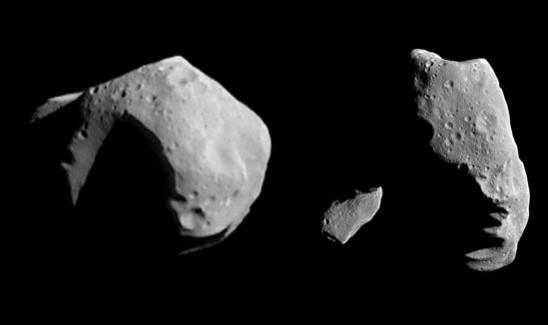
How much impact can a celestial body have on mankind? Fears have been expressed that a comet or an asteroid colliding with earth could wipe out life itself.
Such was the threat from an asteroid that was discovered on December 6, 1997, by Jim Scotti of the Spacewatch programme at the University of Arizona.
however, instead of wiping out humankind, it led to the setting up of organisations and starting of researches and studies that would give us a fighting chance of detecting and fending off such threats. This is the story of how that happened.
Collision threat
When Scotti discovered the asteroid — which came to be known as Asteroid 1997 XF11 — he observed that it was quite wide in diameter. The dimension would be determined at 1.3 km at the slimmest and 2.8 km at the widest.
The International Astronomical Union's Minor Planet Centre was alerted of the discovery, and soon more people were looking into the matter.
Brian Marsden of the Harvard-Smithsonian Centre for Astrophysics said after some time that the asteroid had a minuscule but "not-entirely-out-of-question" chance of hitting earth on October 26, 2028.
But then the US National Aeronautics and Space Administration (Nasa) weighed in. It said in a statement dated March 12, 1998, and quoting scientists from its Jet Propulsion Laboratory (JPL) that the asteroid would "pass well beyond the Moon's distance from Earth in October 2028 with a zero probability of impacting the planet."
'Potentially hazardous object'
What the JPL scientists determined was that the minimum orbit intersection distance (MOID) — the distance between the closest points of the osculating orbits of two bodies — was 0.000436193 astronomical units (AU). [1 AU = Approximate distance between Earth and Sun]
This was well within the 0.5 AU distance that gets heavenly bodies classified as potentially hazardous objects (PHOs) that pose a possible risk to Earth. One such famous PHO is the Swift-Tuttle Comet, which was discovered in 1992 and has been determined to have an Earth MOID of 0.009 AU.
![[Representational image] Asteroid](https://data1.ibtimes.co.in/en/full/653399/asteroid.jpg?h=450&l=50&t=40)
Deep impact
Asteroid 1997 XF11 may not be colliding with Earth in 2028, but its discovery and subsequent panic has had a profound impact on the way we approach PHOs.
It led to the creation of the Near-Earth Object Programme Office, now the Centre for Near-Earth Object Studies, under Nasa's JPL. It has been tasked with finding near-Earth objects of 1 km or more in diameter that pose a threat to the planet.









